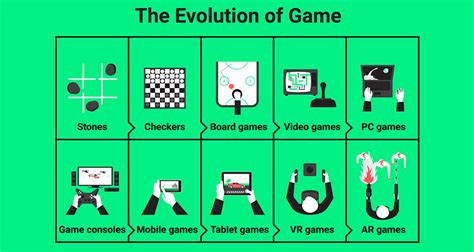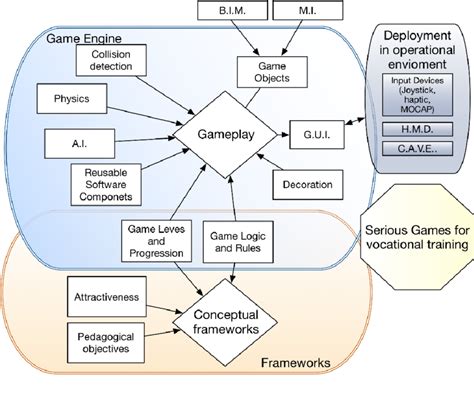Breaking News


Popular News


Explore the impact of advanced game engines, enhanced graphics, and real-time communication on multiplayer gaming and social interaction in this insightful blog post.In recent years, the gaming industry has seen a significant evolution with the rise of multiplayer games. The integration of advanced technology has transformed the gaming experience, enhancing not only the graphics and realism but also the overall gameplay. In this blog post, we will explore the pivotal role of technology in multiplayer games, from its evolution to its impact on social interaction. We will delve into the integration of advanced game engines and how they have revolutionized the gaming landscape, as well as the real-time communication features that have redefined how players interact with each other. Furthermore, we will discuss the implications of enhanced graphics and realism on the overall gaming experience, and how it has transformed the way we play and connect with others. Join us as we unravel the multifaceted impact of technology in multiplayer games and its role in shaping the future of gaming.
Contents

The evolution of multiplayer gaming has been a fascinating journey, with significant advancements in technology contributing to the development of this popular form of entertainment. From the early days of local split-screen gaming to the globally connected networks of today, multiplayer gaming has undergone significant changes due to the advancements in technology.
The integration of advanced game engines such as Unity and Unreal Engine has revolutionized the way multiplayer games are designed and developed. These engines offer powerful tools and features that enable developers to create immersive multiplayer experiences with stunning graphics and realistic environments. As a result, gamers can now enjoy seamless multiplayer gameplay with enhanced visuals and realism that were once thought to be impossible.
Real-time communication features have also played a crucial role in the evolution of multiplayer gaming, allowing players to connect and interact with each other in real-time during gameplay. Whether it’s voice chat, text messaging, or video calls, these communication tools have enhanced the social aspect of multiplayer gaming, enabling players to strategize, coordinate, and bond with their teammates and opponents.
Overall, the evolution of multiplayer gaming has been driven by the impact of technology, which has paved the way for improved gameplay experiences and enhanced social interaction among gamers around the world. As technology continues to advance, the future of multiplayer gaming holds even more exciting possibilities for gamers and developers alike.

Multiplayer gaming has evolved significantly over the years, with technological advancements playing a key role in shaping the gaming experience. One of the most significant advancements in multiplayer gaming has been the integration of advanced game engines, which has revolutionized how games are developed and played.
Game engines are the core software that developers use to create games, and the integration of advanced game engines has allowed for the creation of more immersive and realistic gaming experiences. These engines provide developers with powerful tools and functionalities to create high-quality graphics, complex AI systems, and realistic physics simulations, ultimately enhancing the overall gameplay experience.
Furthermore, the integration of advanced game engines has made it easier for developers to support cross-platform multiplayer gaming, allowing players on different devices to join the same game server and play together. This level of interoperability has greatly expanded the gaming community and has led to more inclusive and diverse player experiences.
Overall, the integration of advanced game engines has significantly raised the bar for multiplayer gaming, pushing the boundaries of what is possible and providing players with more immersive, engaging, and dynamic gaming experiences.

One of the most significant advancements in the world of multiplayer gaming is the enhanced graphics and realism that modern technology has brought to the table. With the integration of advanced game engines, developers have been able to create breathtaking environments and stunning visual effects that were once thought to be impossible. The level of detail and intricacy in today’s multiplayer games is truly awe-inspiring, and it has completely revolutionized the gaming experience for players around the world.
Not only do enhanced graphics and realism make multiplayer games visually appealing, but they also contribute to the overall immersion and realism of the gaming experience. From lifelike character animations to dynamic lighting and realistic physics, these advancements in technology have allowed players to feel fully engrossed in the virtual worlds that they explore. The level of detail and realism that can be achieved in modern multiplayer games is truly remarkable, and it has set a new standard for the industry as a whole.
Furthermore, the enhanced graphics and realism in multiplayer games have opened up new possibilities for storytelling and world-building. With the ability to create stunning visual landscapes and lifelike characters, game developers are able to craft rich and immersive narratives that draw players in and keep them engaged for hours on end. Whether it’s exploring a lush fantasy world or navigating a post-apocalyptic wasteland, the enhanced graphics and realism in modern multiplayer games have allowed for unparalleled creativity and artistic expression.
Overall, the role of technology in enhancing graphics and realism in multiplayer games cannot be overstated. These advancements have not only raised the bar for visual quality and immersion in gaming, but they have also opened up endless opportunities for creativity and storytelling. As technology continues to evolve, we can only imagine the incredible landscapes and experiences that await us in the world of multiplayer gaming.

Real-time communication features play a crucial role in the multiplayer gaming experience, allowing players to interact with each other in real time. These features enable players to communicate with each other through chat, voice, and video, creating a more immersive and social gaming experience.
One of the key benefits of real-time communication features is the ability to strategize and coordinate with teammates during gameplay. This enhances the overall gaming experience and fosters teamwork among players. Whether it’s coordinating an attack in a first-person shooter game or devising a plan in a strategy game, real-time communication features are essential for successful gameplay.
Furthermore, real-time communication features also facilitate social interaction among players. In addition to coordinating gameplay, players can engage in casual conversations, form alliances, and build friendships within the gaming community. This fosters a sense of belonging and camaraderie, creating a more engaging and enjoyable gaming experience.
Overall, real-time communication features are integral to the multiplayer gaming experience, enhancing teamwork, social interaction, and overall immersion in the virtual world. As technology continues to advance, these features will play an increasingly important role in shaping the future of multiplayer gaming.

In the world of multiplayer gaming, the improvement of gameplay experience has been a key focus for developers. With the integration of advanced game engines, players can now enjoy more immersive and engaging gameplay. These engines allow for more realistic environments, character movements, and interactions, creating a more enjoyable experience for the players.
Additionally, the enhanced graphics and realism in multiplayer games contribute to the improved gameplay experience. High-definition graphics, dynamic lighting, and lifelike animations bring the virtual world to life, making the gameplay more compelling and captivating. The attention to detail and visual quality adds another layer of enjoyment for the players.
Furthermore, the evolution of multiplayer gaming has led to the introduction of real-time communication features, such as voice chat and messaging systems. This allows players to strategize, coordinate, and socialize with their teammates, enhancing the overall gaming experience. The ability to communicate effectively with other players contributes to a more cohesive and satisfying gameplay experience.
Overall, the role of technology in improving gameplay experience cannot be overstated. The integration of advanced game engines, enhanced graphics and realism, and real-time communication features have greatly enhanced the multiplayer gaming experience, providing players with more immersive, engaging, and enjoyable gameplay.

One of the most significant and perhaps surprising impacts of technology in multiplayer games is its effect on social interaction. With the rise of online gaming, gamers are no longer limited to playing with friends who live in close proximity. Instead, they can connect with others from around the world, forming new friendships and communities based on shared interests in gaming.
This enhanced connectivity has also led to the development of online gaming communities that transcend geographical boundaries and bring together people from diverse backgrounds. Through multiplayer gaming platforms, individuals can interact, collaborate, and compete with others, fostering a sense of camaraderie and teamwork that extends beyond the virtual world.
Furthermore, the interactive nature of multiplayer games can facilitate communication and problem-solving skills, as players must effectively communicate and strategize with their teammates to achieve success in the game. As a result, online gaming has the potential to cultivate valuable social skills and promote cooperation among players, contributing to the broader impact of technology on social interaction.
| Positive Impacts on Social Interaction | Negative Impacts on Social Interaction |
|---|---|
|
|
|
|
|
|
|
|
|

How has technology changed multiplayer games?
Technology has greatly impacted multiplayer games by enabling more realistic graphics, faster processing speeds, and smoother online gameplay experiences.
What are some examples of technologies used in multiplayer games?
Some examples of technologies used in multiplayer games include cloud gaming, virtual reality, augmented reality, and advanced networking infrastructures.
How does technology enhance the social aspect of multiplayer games?
Technology has enhanced the social aspect of multiplayer games by providing better communication tools, social media integration, and the ability to connect with other players around the world.
What role does technology play in game matchmaking?
Technology plays a crucial role in game matchmaking by using algorithms to pair players with similar skill levels and preferences, creating a more balanced and enjoyable gaming experience.
What are the potential future advancements in technology for multiplayer games?
Potential future advancements in technology for multiplayer games include more immersive virtual reality experiences, seamless cross-platform play, and enhanced artificial intelligence for more realistic non-player characters.
How does technology impact the competitiveness of multiplayer games?
Technology impacts the competitiveness of multiplayer games by providing better tools for practice, training, and analysis, as well as creating a level playing field for all players.
What challenges does technology present for multiplayer game developers?
Some challenges that technology presents for multiplayer game developers include ensuring compatibility across different devices and platforms, addressing cybersecurity concerns, and optimizing performance for a wide range of hardware.